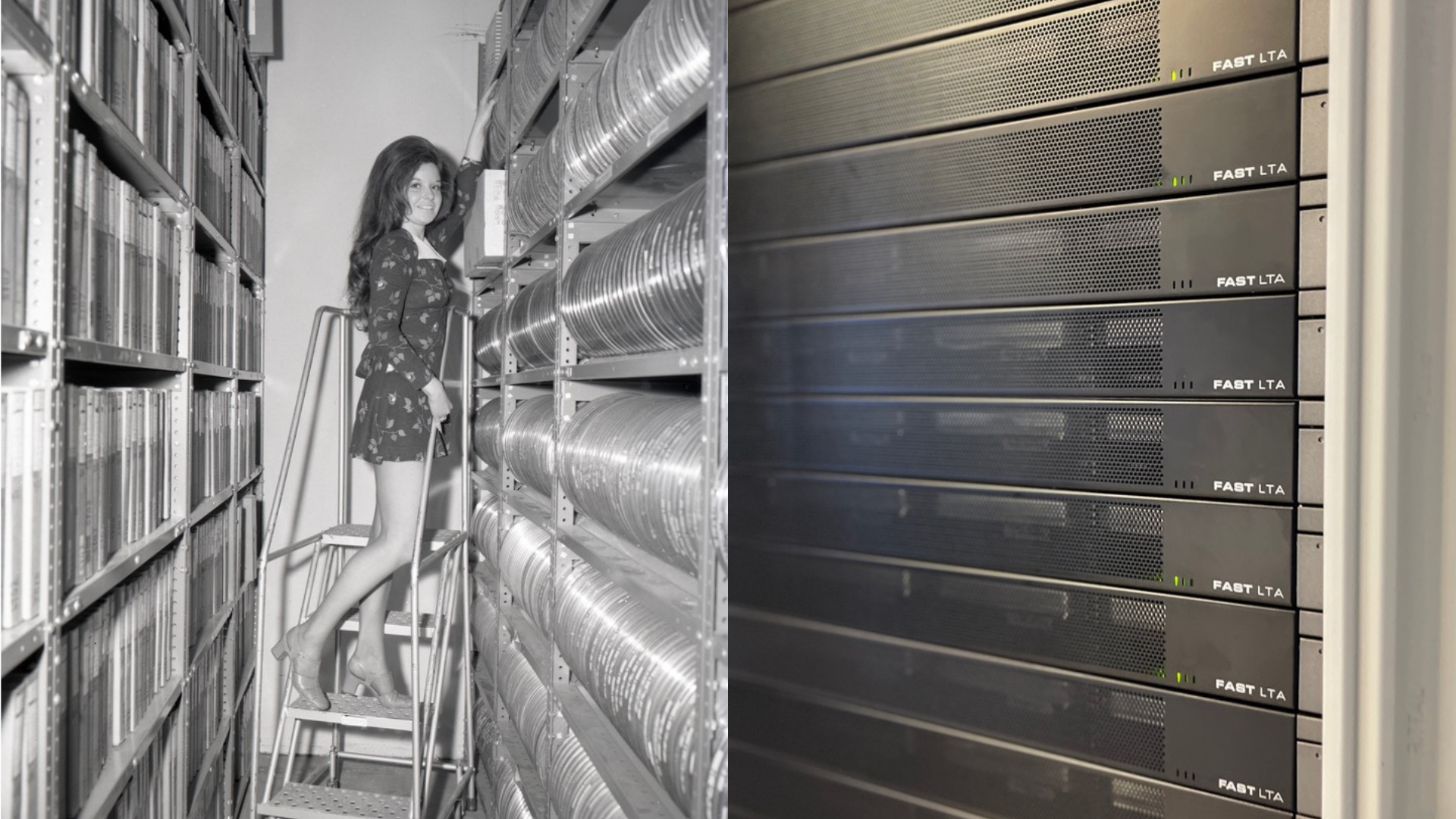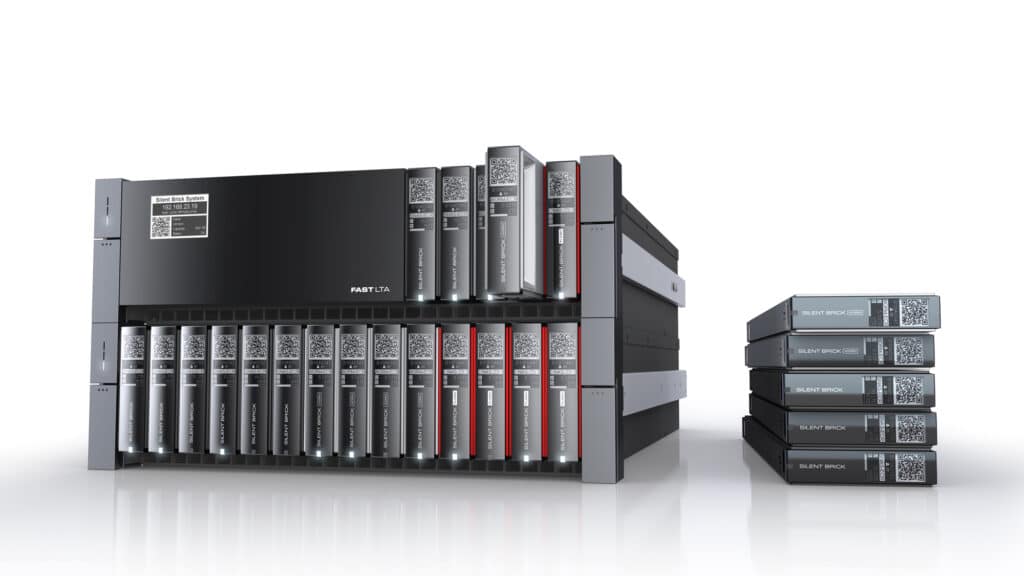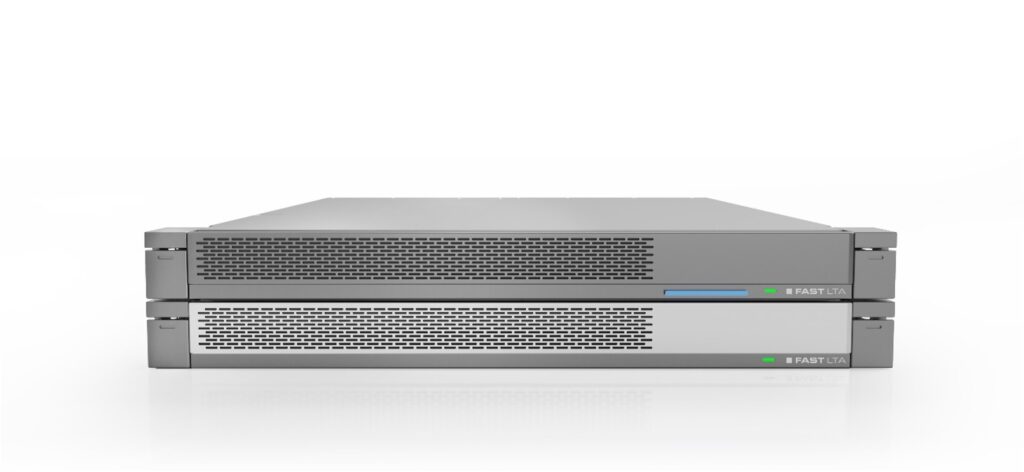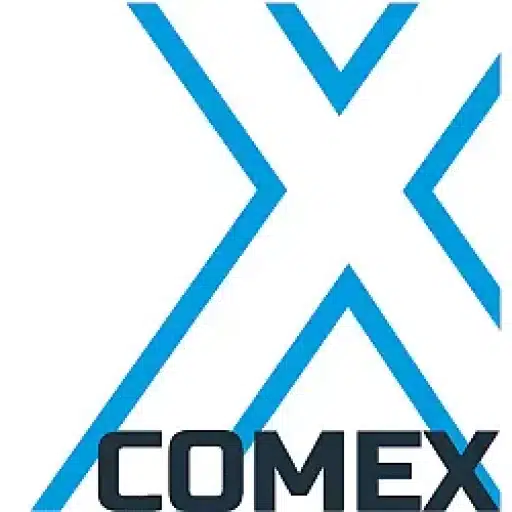+31 (0)43 30 88 400 | office@comex.eu

Secure and save with an active WORM archive!
An archive has long been seen as a “data crypt,” as a last refuge for data that one (hopefully) never needs access to again. However, an active WORM archive can help streamline data storage, better secure data, cut costs and prepare for future requirements.
In many films, officials are transferred to the archives as punishment. Dark rooms with hallways full of files that almost no one but the archivist ever sees. Often the archive and the omniscient archivist saves the movie hero at the end, because that is the only place to find information crucial to the course of the story.
This image of the archive has survived for many even in the digital age: data that ends up in the archive is difficult to access and usable only with great difficulty. The archive is the burial ground for data that one (hopefully) will never need again. Such data can disappear into so-called “cold archives” – or, if there are no legal reasons against it, actually be erased as well.
The key question: what data?
With that, however, a crucial question arises: who decides what data is transferred to the archive? – Actually the creator of the data, that is, the user. In practice, this is unrealistic because users rarely engage in data management. So this task sticks to the IT manager. But these often cannot assess which data are really “no longer needed” and should go to the archives.
When in doubt, one decides to keep much more data in production environments than would actually be necessary. The result: the cost of productive storage and data security keeps rising. Moreover, in the age of ransomware, where several backups must then be additionally secured with immutability, this increases the complexity of data security.
The active archive
In contrast, archival storage, which is not based on purely offline media (such as tape), can be used as an “active archive.” The idea: even when data is pushed from production systems to the active archive, it always remains available. Thus, it involves identifying data that should no longer be changed, such as increasingly automatically generated data. Early outsourcing significantly streamlines data security, saves costs and reduces complexity.
The active WORM archive
Cyber attackers almost always target data security first to prevent reliable recovery of manipulated data. Active archives thus need special protection. The highest security offers storage systems with insurmountable hardware protection: WORM storage.
The modern archive
A modern archive should be seen as a central part of data security to reduce regular backups and minimize the complexity of backup and recovery in general. Random, fast access guarantees the availability of deployed data, a protection with hardware WORM guarantees maximum protection. This removes several obstacles to archiving.
- It is relatively clear which data can be outsourced to the (active) archive: at least all automatically generated, non-reproducible data. Care must be taken with personal data and other sensitive data, which usually require special, audit-proof filing systems.
- It doesn’t matter if “too much” data ends up in the archive. In the worst case scenario, a new version of the dataset is created when changed. The more data moved to the active archive, the leaner the backup becomes.
- Because: the data is still available. In many cases, archive software provides data transparency, then users don’t even notice where the data is ultimately stored. Or the active archive acts as a network storage (NAS), which users can access by usual means.
- The WORM hardware protects the data from manipulation and accidental deletion one hundred percent from the start. A data manipulation would occur in a WORM archive only create new versions, where the required capacity would suddenly increase dramatically. Thus, such attacks can be recognized relatively easily. To protect against human error and technical failure, the archive storage system must also have sufficient local and geographical redundancy.
Technologies: Tape, Cloud, Disk/Flash
Tape is considered a classic archival medium and also offers concrete advantages for “cold archives.” The media are inexpensive, can be stored securely offline, and the capacity can be expanded basically indefinitely. However, data on tapes is “cold” and only usable again after being played back on another storage system. An active archive cannot be realized in this way.
Increasingly popular is the outsourcing of data to a cloud archive. This can make sense for small businesses because it does not require investment in special storage systems. Costs also seem low at first. Often insertion (uploading) and storage costs nothing or very little. However, costs arise during data retrieval. In doing so, there are often multiple levels, depending on the desired availability. For rare or one-time retrieval, this may be acceptable, but the past has shown that providers can – and do – raise their prices at will. Especially when data are needed repeatedly and in large quantities for local evaluations (KI), the question of economic feasibility arises. Problematic can be the lack of transparency about actual storage, especially when it comes to data covered by the AVG.
So local or private storage systems, based on nonlinear media such as hard drives or flash, remain. Standard storage, however, in most cases does not meet the requirements to be used as an active WORM archive, which can also compete with the aforementioned “alternatives” in terms of price. Active WORM archives based on hard drives (or flash) are therefore dedicated storage systems.
Silent Cubes
For more than 15 years, Silent Cubes have been securing archival data with exactly these features. Originally, this system was developed for revision-proof archiving to meet legal requirements. Today, Silent Cubes are increasingly used as general, active WORM archives. In addition to WORM protection by hardware, they have further technologies to protect against data manipulation and data loss. Within a storage module, data is protected from hardware failures with quadruple redundancy through Erasure-Coding.
Silent Bricks & Silent Cubes: Reliable data guarantee

Enjoy secure, complete data backup with the flexible Silent Brick system that fits your organization’s needs seamlessly.
With the highly secure Silent Cube system, you guarantee long-term, compliant archiving without any data loss.



